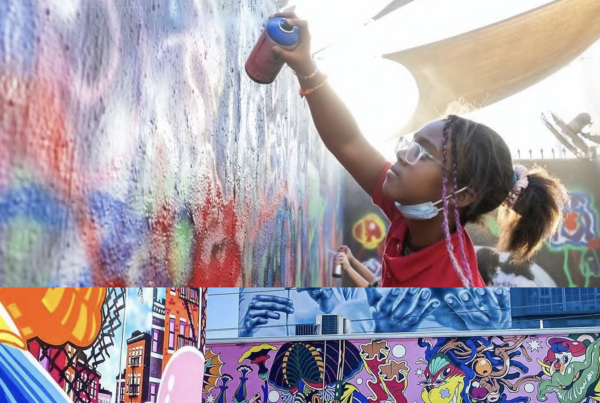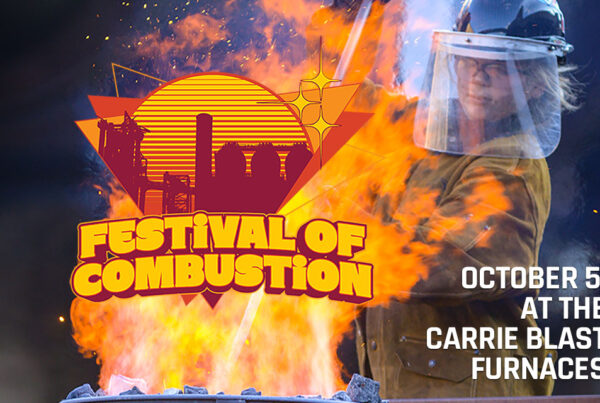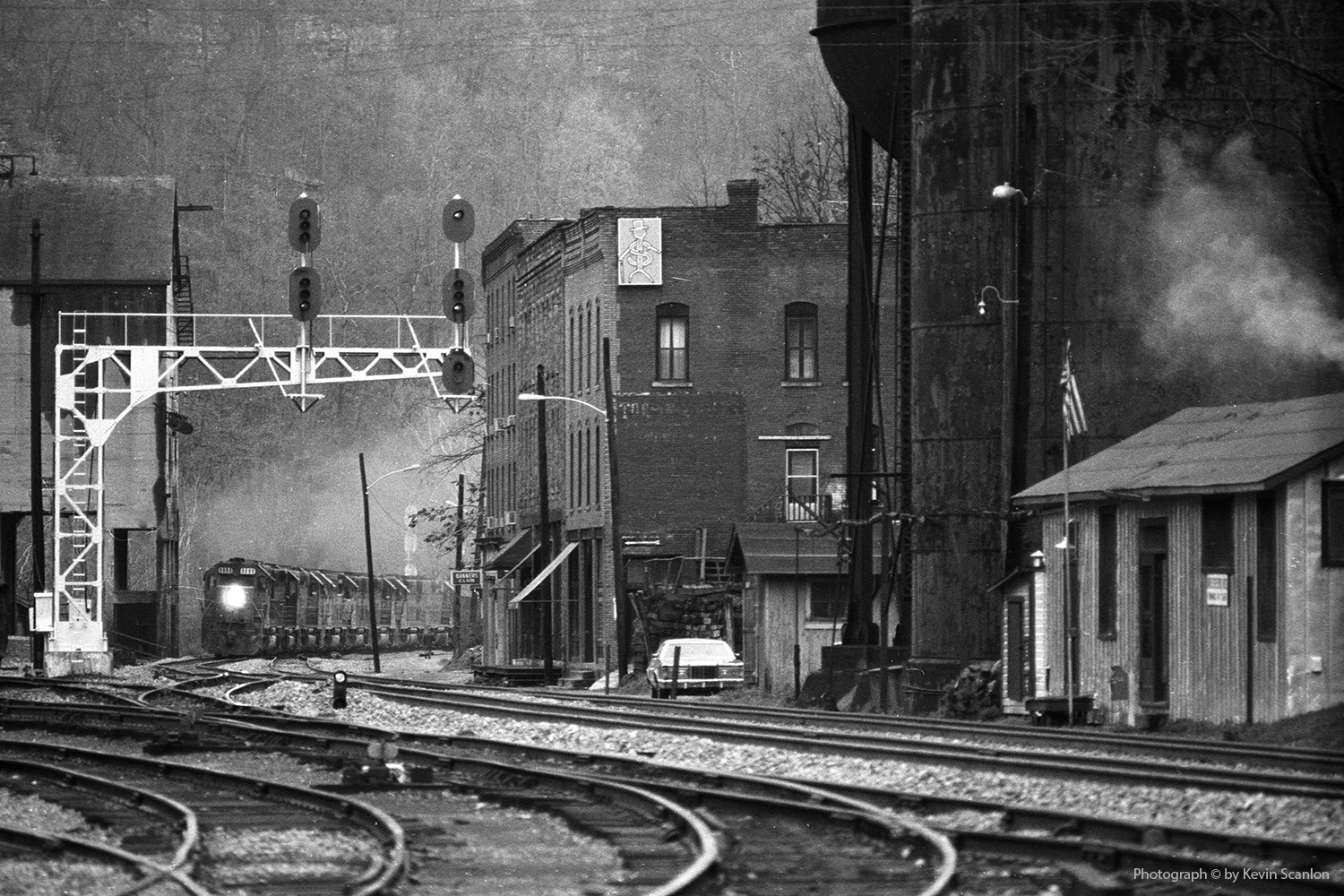
Photos and Essay by Kevin Scanlon, Rivers of Steel Volunteer
 Mill Marks
Mill Marks
The latter part of the 1800s was the era that made Western Pennsylvania a leader in steel production. Several events added up to enable that growth. In 1869, the transcontinental railroad was completed. This spurred growth of all railroads. 1872 saw the invention of George Westinghouse’s automatic air brake. In 1873 the automatic coupler was patented. This all meant that trains would be longer, heavier, faster and with bigger locomotives. The existing railroad bridges would have to be replaced with stronger ones, and the iron rails themselves needed to be replaced with steel rails to withstand the pounding.
Andrew Carnegie saw opportunity during the time he spent working for the Pennsylvania Railroad. The railroads were going to need lots of steel to improve their right of way and he would be their primary supplier. His Keystone Bridge Works took on spectacular projects such as spanning the Mississippi River. Carnegie Steel built the Edgar Thomson Works in 1875 to provide steel rails for the PRR. It was his first steel mill and is still in operation, though no longer producing rail. It can be argued that Pittsburgh would not have become what it was without the era of railroad growth.
I’ve spent quite a bit of time over the years walking along railroad tracks. Anyone who does so will notice that all of the rails have mill marks: cast-in “labels” identifying who made the rail, the size, when it was rolled and other specialized details. The marks are repeated every few feet along the side of the rail. Not only are the rails identified this way, but often bridge girders, tie plates and equipment have mill marks or builders’ plates. All of the rail infrastructure was made for heavy use and made to endure. Railroads can’t repave their tracks every 7-10 years like we do with roads. It is not unusual to see rails on secondary routes and yards that are still doing their job 80-100 years after being rolled in the mills.
Often I find myself daydreaming about what was going on when a particular rail was being made. It’s kind of like looking at an autograph and thinking about the person who signed it and what was going on in their life when their hand held that pen.
Here are a few examples:
Thurmond, West Virginia
Carnegie Steel, Edgar Thompson, 1899
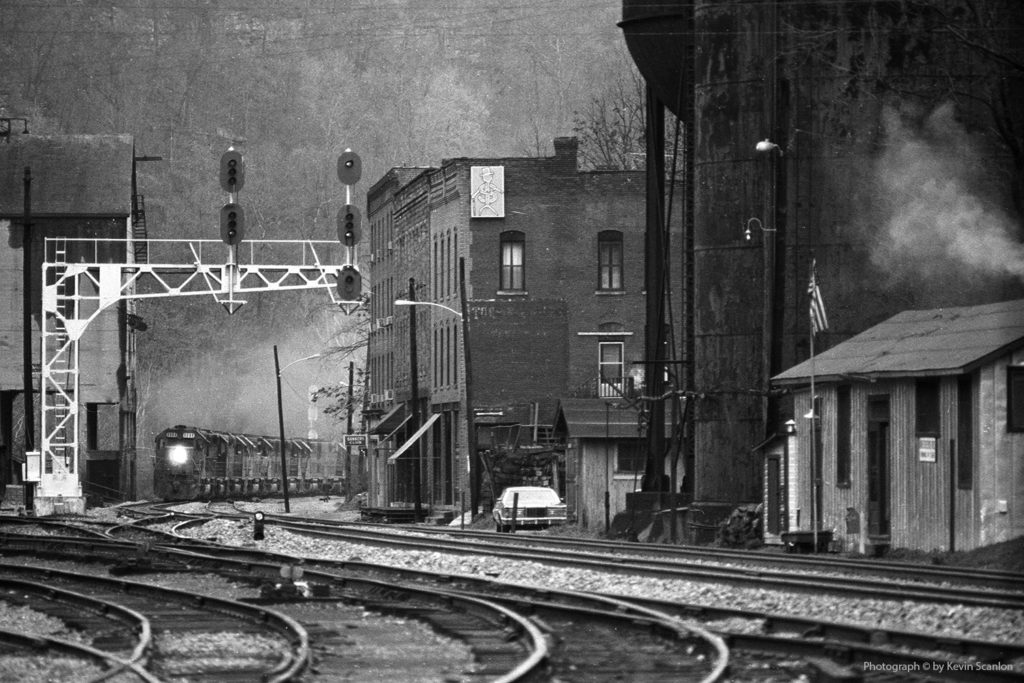
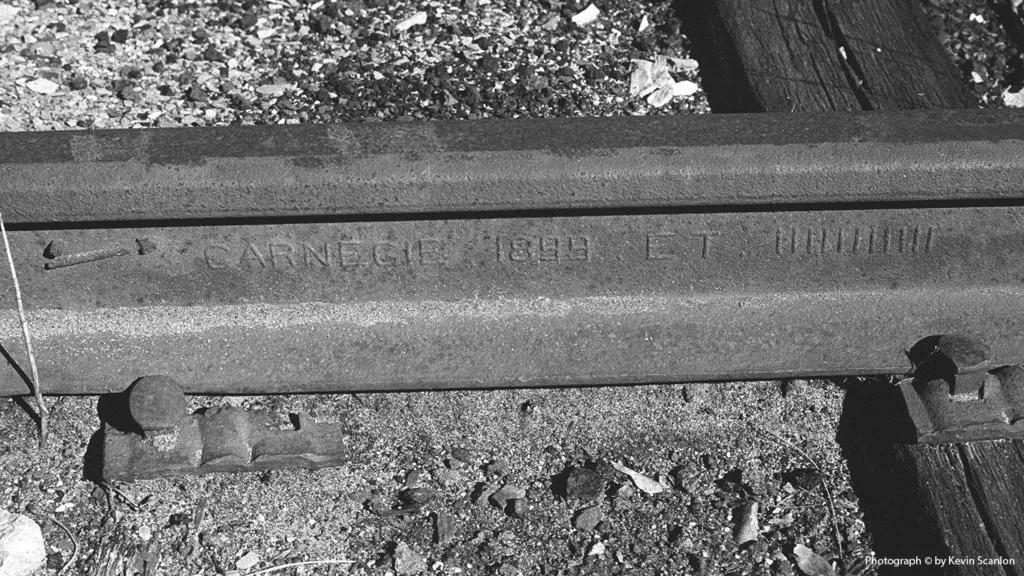
This rail was rolled at the Edgar Thomson Works in November 1899 when the works were still owned by Andrew Carnegie and just 24 years into the mill’s life. Also in 1899 the Pittsburgh Zoo and Kennywood Park were only one year old. Iron City Beer maker Pittsburgh Brewing Company and the Duquesne Brewing Company were newly established. This rail was in a yard of the CSX Railroad in Thurmond, WV.
Lackawanna Steel, 1956
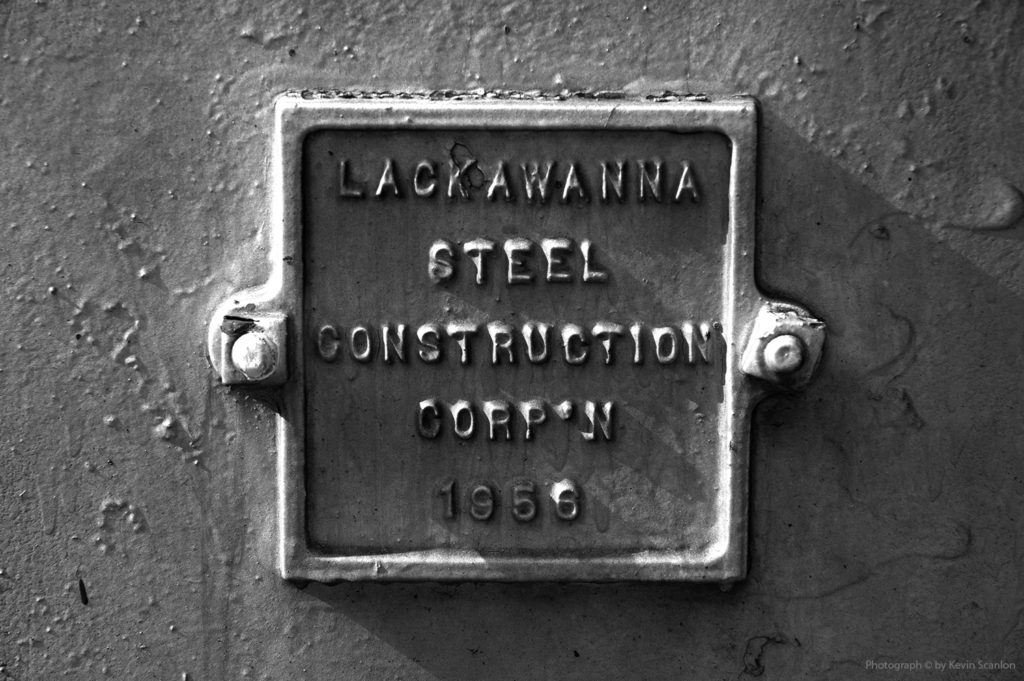
The Lackawanna 1956 plate was on the cantilever signal bridge at the town of Thurmond. By 1956 Lackawanna Steel was a part of Bethlehem Steel. They specialized in plate and structural steel although they did roll rail at Lackawanna and their former Pennsylvania Steel plant in Steelton, PA. The Lackawanna fabrication shop made a lot of these distinctive cantilever signal bridges for the Chesapeake and Ohio Railroad.
Spruce, West Virginia
Lackawanna Steel, 1904
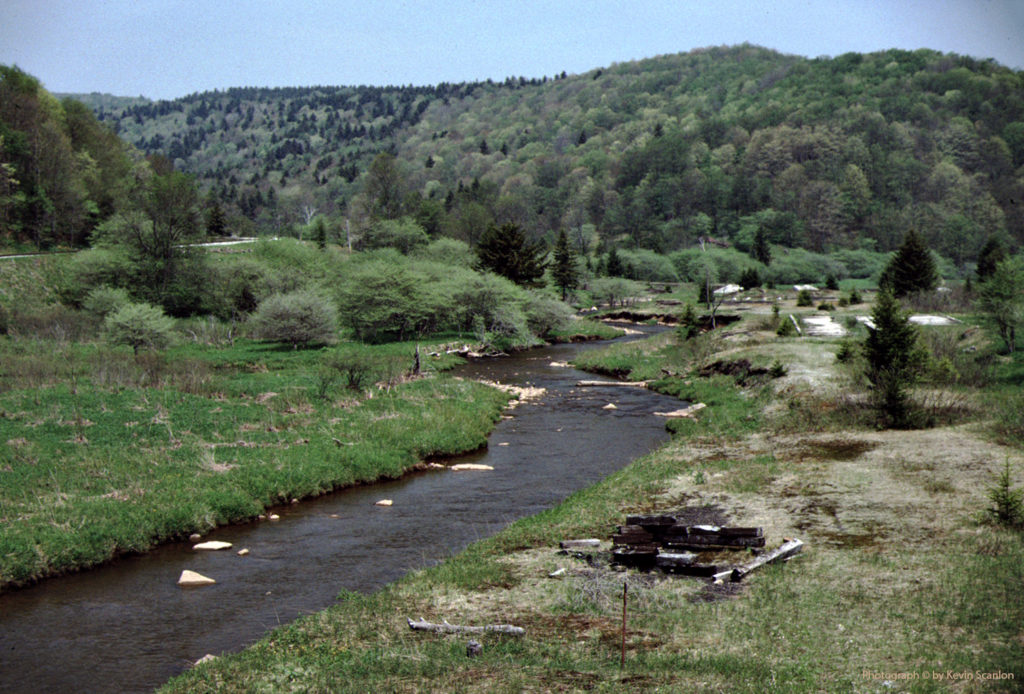
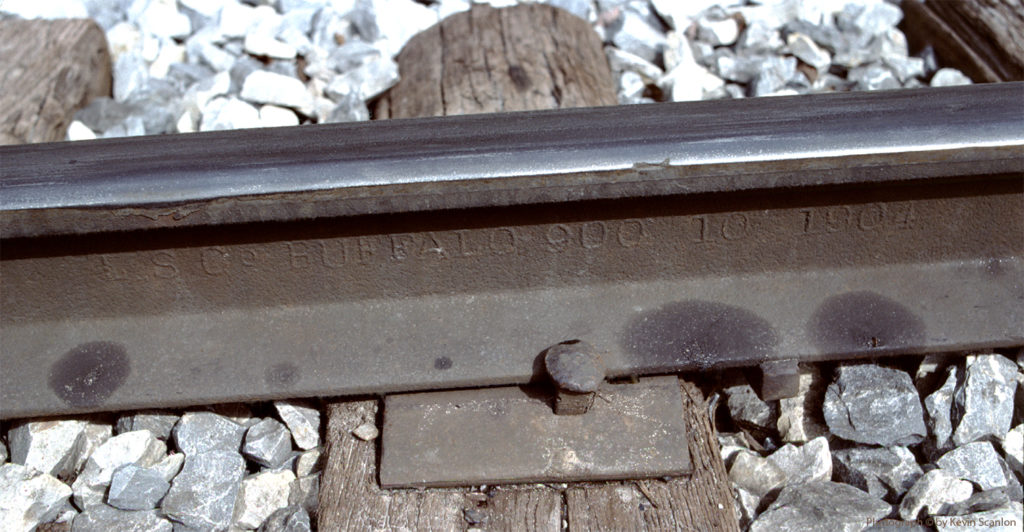
This section of rail was rolled by the Lackawanna Steel Company in Buffalo, NY at their brand new steel mill on the shore of Lake Erie. The mill was built in 1902 to compete with Carnegie Steel for the railroad business. The rail in the photo was still in service at Spruce, West Virginia when the photo was taken. Spruce was an isolated mountain town which had no road access. A lumber mill opened there in 1902 and the railroad was the highest elevation of any mainline east of the Mississippi at 4033 feet a few miles from Spruce. Nothing is left of the town except a concrete pad where the railroad engine house stood and some crumbling foundations of the old lumber mill. The photo of Spruce shows the Shavers Fork River flowing through the townsite, the railroad is on an embankment on the left.
Tobin, California
Fort Pitt Bridge Works, 1909
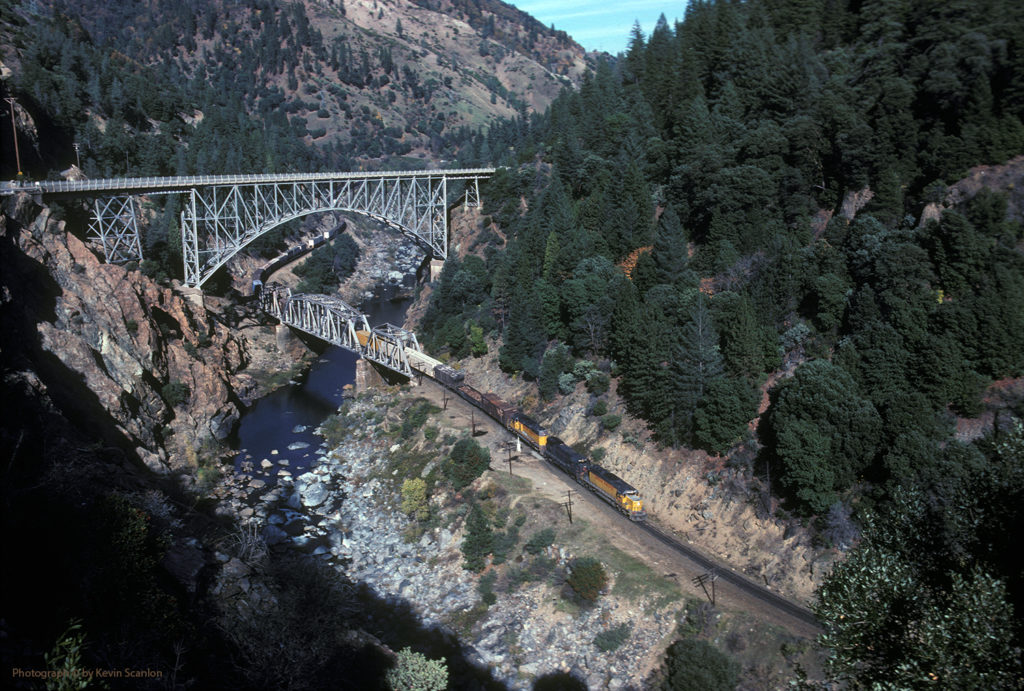
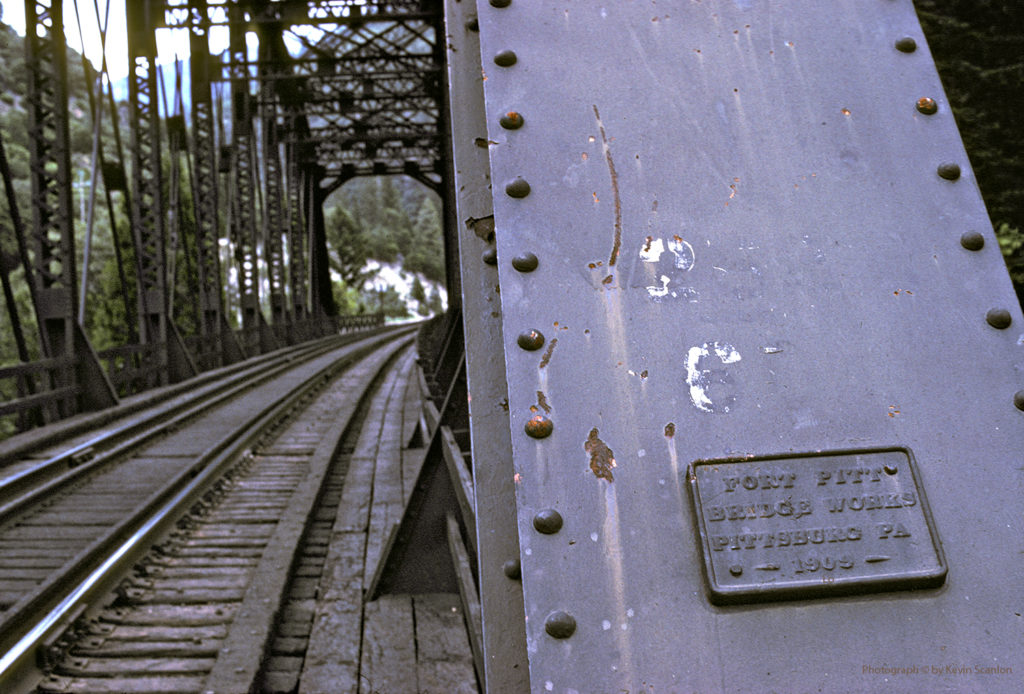
This is a builder’s plate on a Western Pacific Railway bridge in Feather River Canyon at Tobin, CA. The famed California Zephyr streamliner crossed this bridge on its run between Oakland, CA and Denver, CO. The bridge was constructed in 1909 during the 20 year span when Pittsburgh lost its “h”. The Fort Pitt Bridge Works was Pittsburgh based and specialized in bridges, steel structures, and blast furnace topworks. They supplied the steel for the Sewickley, Smithfield, McKees Rocks, 16th Street, and 31st Street bridges as well as bridges for the Parkway East and the PA Turnpike. When this bridge was being built, the Pittsburgh Pirates won their first World Series at the brand new Forbes Field. Honus Wagner led the Buccos in seven games, outplaying the Detroit Tigers with Ty Cobb.
Buffalo, New York
Lackawanna Steel, 1917
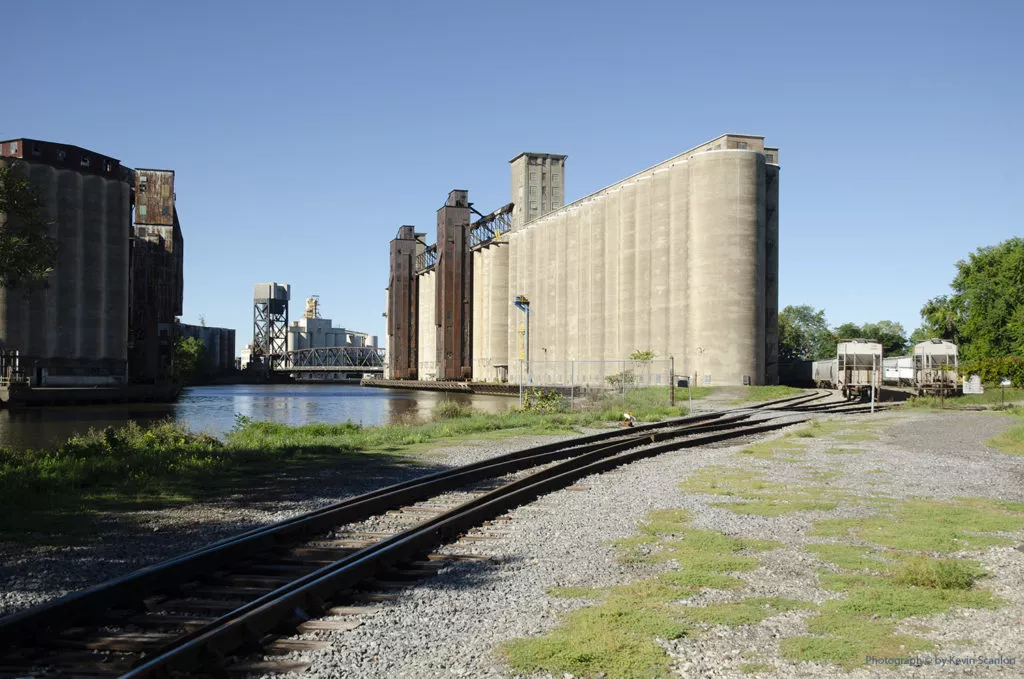
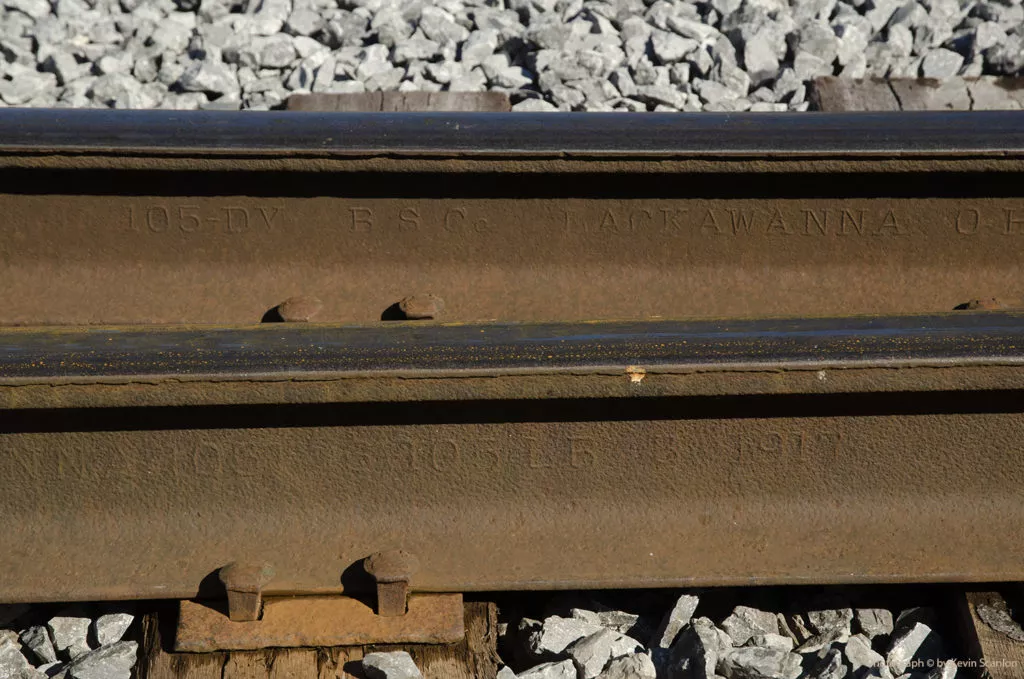
Lackawanna Steel Company rail from 1917. This was in service in Buffalo, NY at a grain elevator on the Buffalo River. In 1917, Buffalo was the hub for grain shipments coming out of the midwest through the great lakes. The big news for Buffalo at that time was the opening of the Glenn Curtiss Aeroplane manufacturing plant, the largest plane factory in the world. Just in time, too, since the US entered WWI that same year.
Coopers, West Virginia
Carnegie Steel, Edgar Thompson, 1926
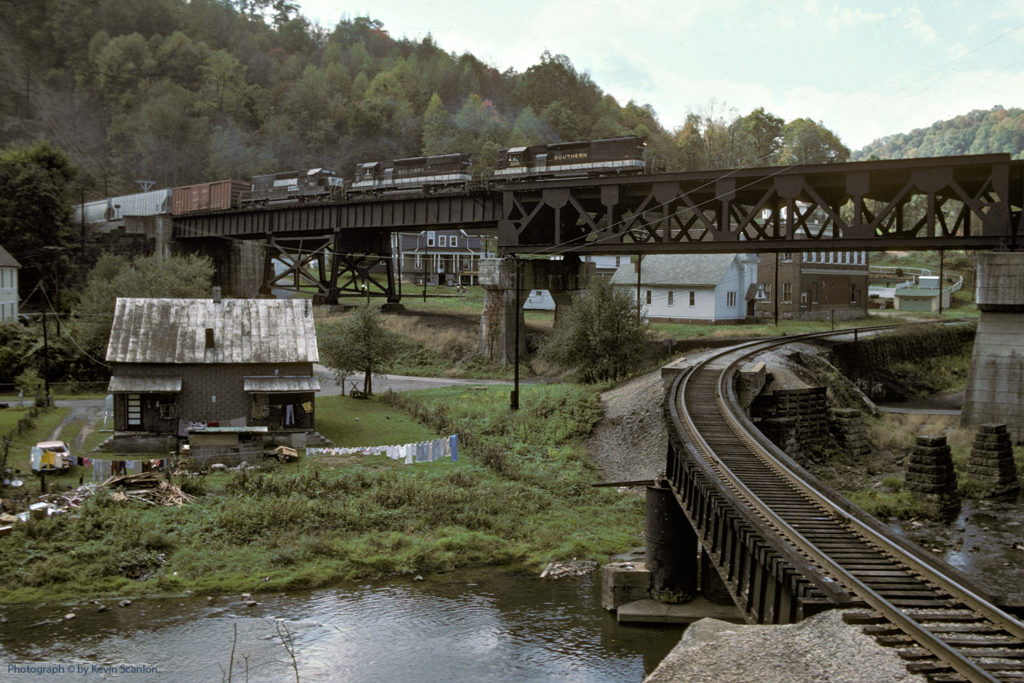
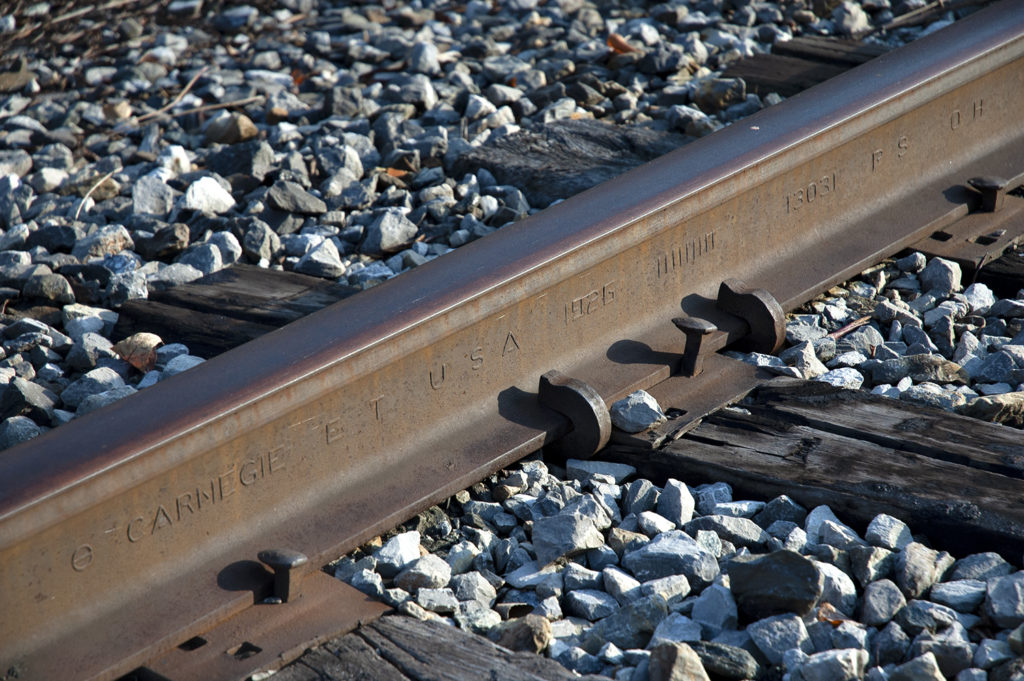
A lesson in reading mill marks: this rail was rolled by the CARNEGIE Steel Edgar Thomson Plant USA in 1926. The slash marks are for the month rolled, so this one is a September baby. 13031 indicates the rail weight, 130 lbs per yard. PS is Pennsylvania Section, the profile spec of the rail and OH indicates that it is Open Hearth steel. It must have been good quality because it was still carrying coal trains in Coopers, WV on the Norfolk and Western Railway. Coopers and the branchline this rail was on is near where a blacksmith named Jordan Nelson used coal from a nearby seam to fuel his forge. A representative from the railroad stopped by in 1881 as they were surveying their line. Jordan showed him where he got his coal, a 13 foot thick seam on a hillside. This was the start of the billion dollar Pocahontas coal field in the southern border of West Virginia.
Johnstown, PA
Carnegie (US Steel), 1949
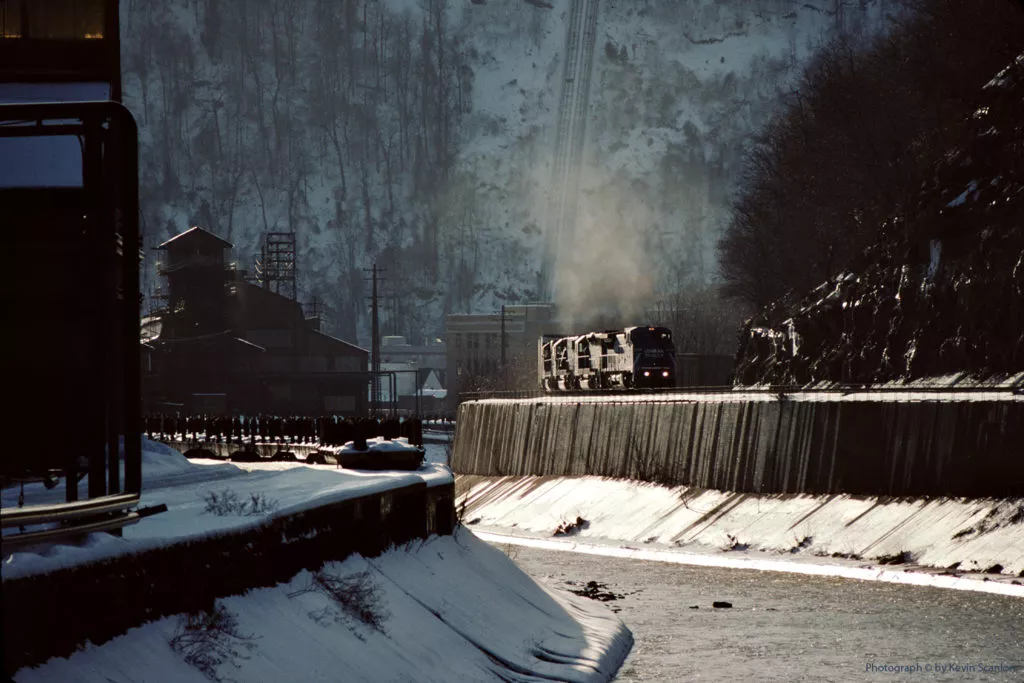
Johnstown was built around steel. This photo shows the Gautier Steel mill on the left and the Little Conemaugh River with a Norfolk Southern eastbound train starting the climb up to Altoona. The tracks of the Johnstown Inclined Plane climb Yoder Hill in the background.
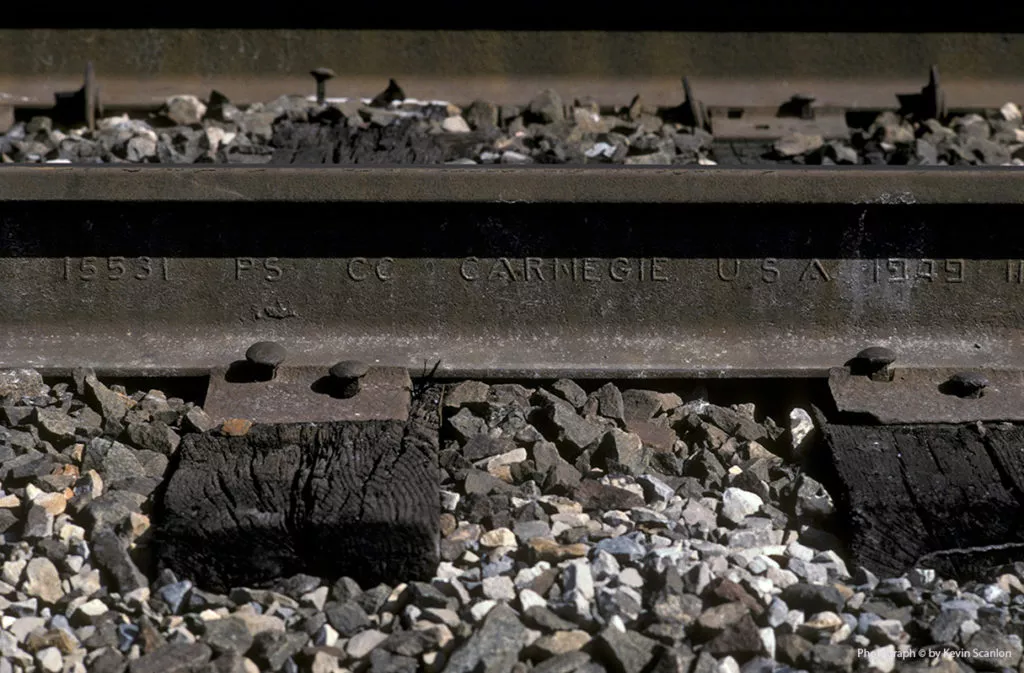
This rail type is pretty unique. It was rolled by Carnegie (US Steel) in 1949 specifically for the Pennsylvania Railroad. The PRR was rebuilding after WWII and specified the largest rail profile ever produced, 155 lbs per yard. This heavy duty rail was like everything the Pennsy bought for their railroad: built to last. They were called the Standard Railroad of the World because they set the goal that other railroads hoped to achieve. A four track mainline, stone bridges that are still rock steady over 100 years later, the most tonnage moved and the largest employer in the US at one time. It’s no coincidence that the mill where this rail was made was named by Andrew Carnegie after the president of the PRR, J. Edgar Thomson.

 Mill Marks
Mill Marks
